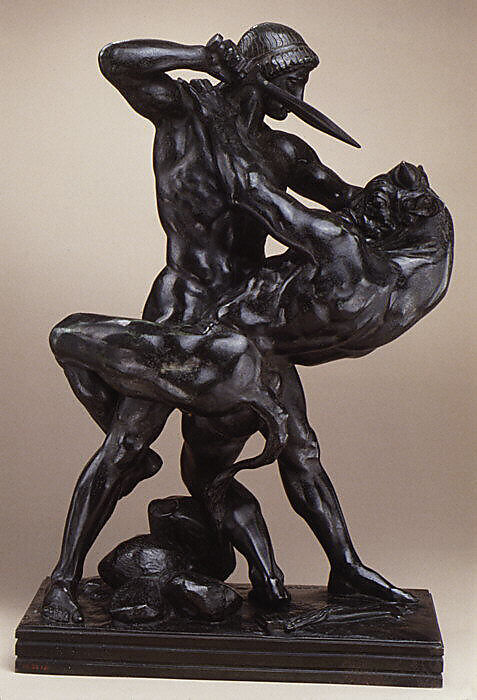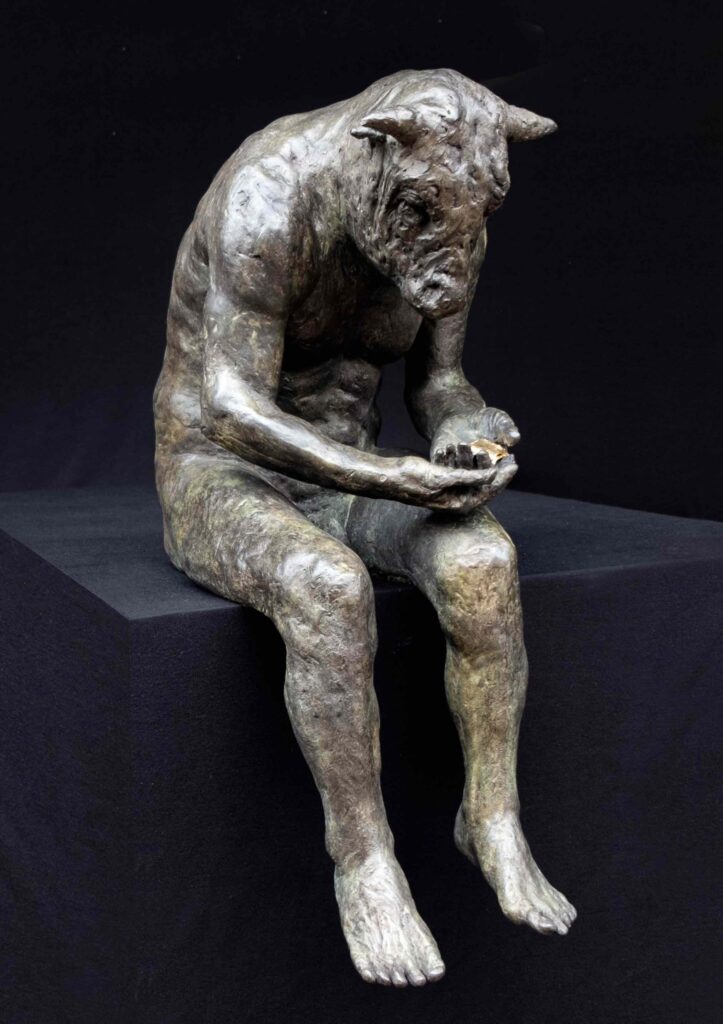
As with many monsters, the mythology surrounding the Minotaur goes far deeper than the hero’s quest to kill it. The story of Crete’s monstrous prince, given the name Asterion (“The Starry One”) in some sources, also entwines with several other widely popular mythological figures.1 The Minotaur’s mother, Queen Pasiphaë, is a part of the same family of witches that produced Circe and Medea;2 and Daedalus, the inventor of both the wooden bull used for Asterion’s conception and his labyrinthine prison, has his own famous offspring.

Personally, what I find more interesting than the Minotaur’s key role in the mythological cycle is the empathy that this monster inspires in modern audiences. There is something undeniably compelling about a creature who is told from birth that it is a monster, and never given an opportunity to prove otherwise; a creature that’s very existence acts as punishment not for any wrongs it has committed, but for a mistake made before it was even born; a creature taken from its family and forced to live its entire life in isolation. Despite both being accomplished killers, Theseus’ life is the stuff of epics, Asterion’s is a tragedy. It makes sense, then, that so many modern artists have chosen to inhabit the perspective of the monster, rather than the hero. I was inspired to write something from Asterion’s perspective by this recent trend in music and artwork, including the sculptures of Beth Carter and the 2018 concept album This One’s for the Dancer & This One’s for the Dancer’s Bouquet by the artist Moonface.
Soliloquies from the Labyrinth at Knossos
1.
Every day, the birds—
Companions whose names I do not know,
but their colors, their songs,
are a language of their own.
I cannot mimic
their sweet sounds. This throat
was made only to swallow.
2.
Sometimes, there is light.
Sometimes, there is dark.
Sometimes, I can almost see the moon.
There used to be a sister.
There used to be a mother.
Just for a moment.
If you don’t know—
A mother is made of soft hands and cloth that smells like flowers
and hay and warm milk and touch and breath.
Sisters are smaller.
They are made of hair like silk and laughter
and song and feet that dance on green grass.
I suppose these are not very strong things to be made of.
They don’t last like stone and mortar and hunger.
3.
Sometimes I forget that I am a monster. It is hard to be monstrous when you are alone. It is hard to not close your eyes and try to imagine that you are a tree, or a river, or an animal. I do not imagine that I am a person. I know the word brother. I know the word son. I do not imagine I am either. Instead, I am a reaching branch. I am a stone the current carries out to sea. I am a flock of sheep tended by a young shepherd. I am not an open mouth. I am not a punishment for a crime I did not commit. I am not a trial for a hero to overcome. I am a part of a whole.
4.
I’ve never seen the ocean, but I can always smell
the salt brine sting in the air. I can hear the waves
crash against the shore. The ocean is something
vast. It is something that swallows but never
hungers. Can you dream about something you
have never seen? When I dream about the ocean
I dream about blue. I dream about the rocking
of arms and the shush of warm breath. I dream
that something calls to me, in a voice like the
whistling of wind around a clever corner. It
speaks to me of distance. It speaks to me of
the space that lies between surf and stars. It
washes away what is ugly and impure and
leaves me clean at last.
Images:
Seated Minotaur IV, Beth Carter, 2021, cast bronze, photo courtesy of Hugo Galerie, New York, NY
Theseus Slaying the Minotaur, Antoine-Louis Barye, 1843, cast bronze. This work is in the public domain, photo courtesy of the Metropolitan Museum of Art.